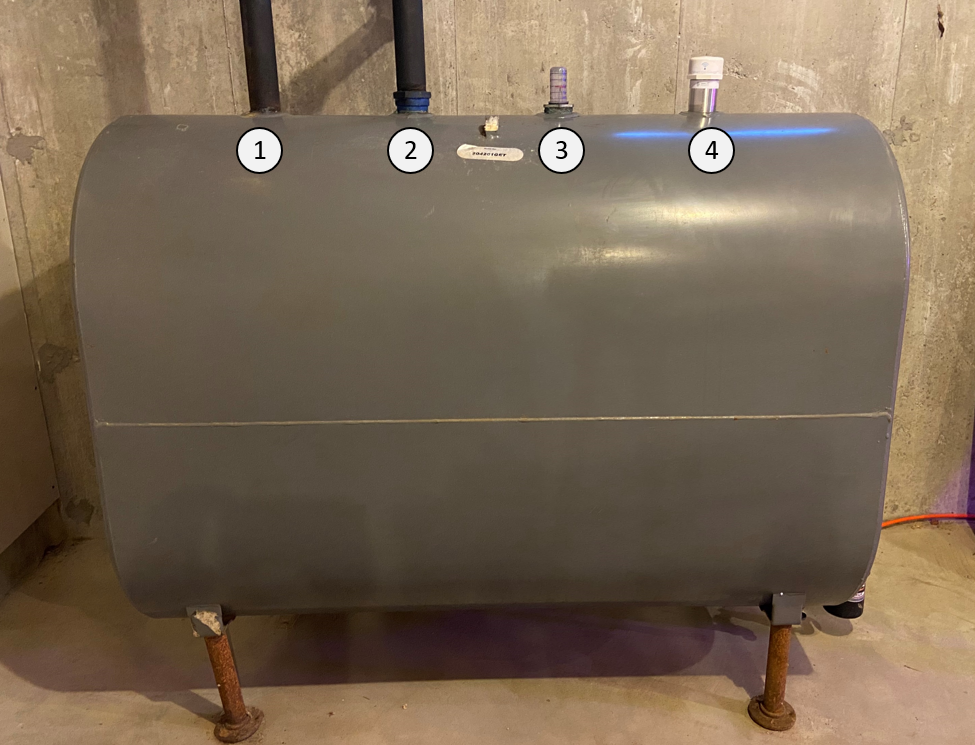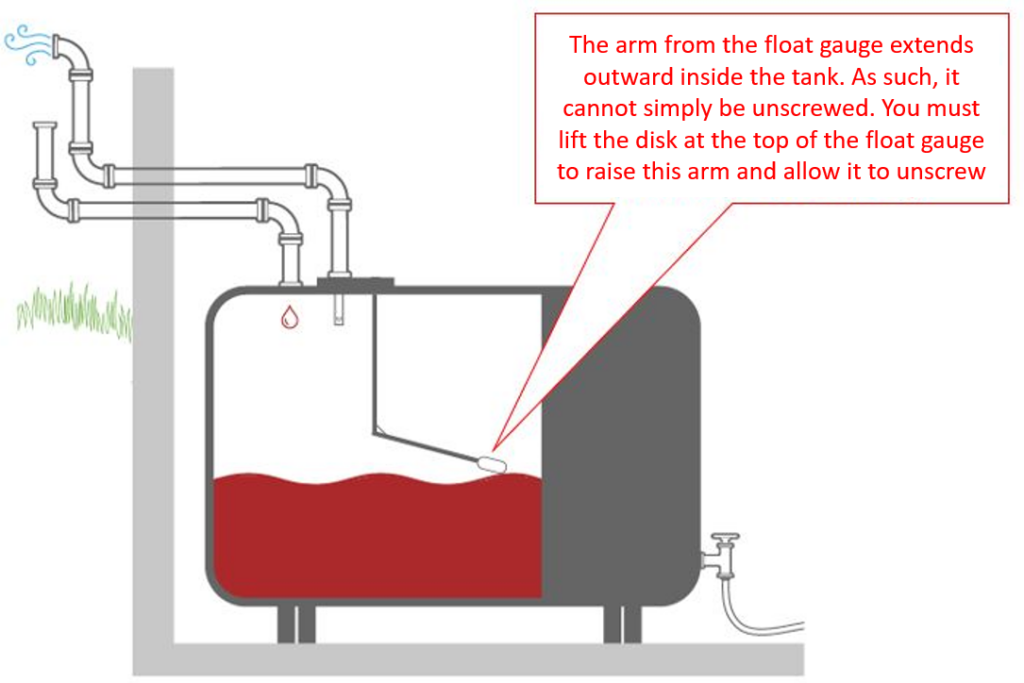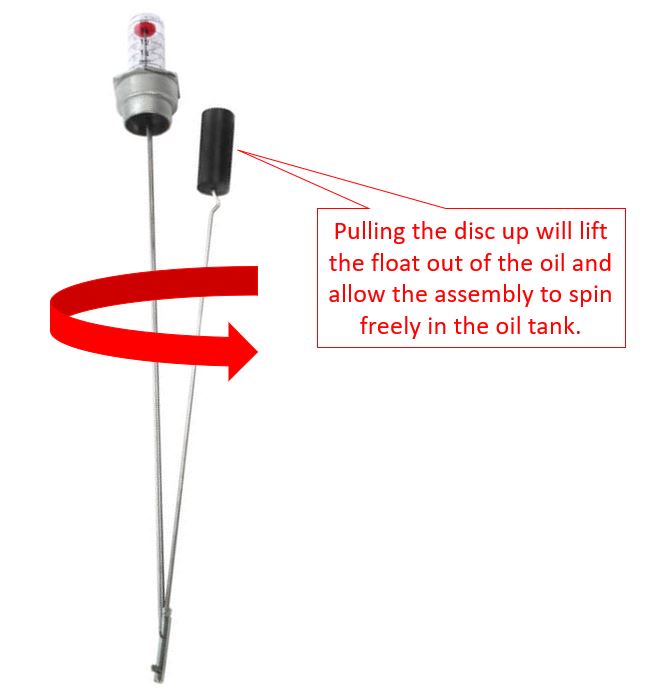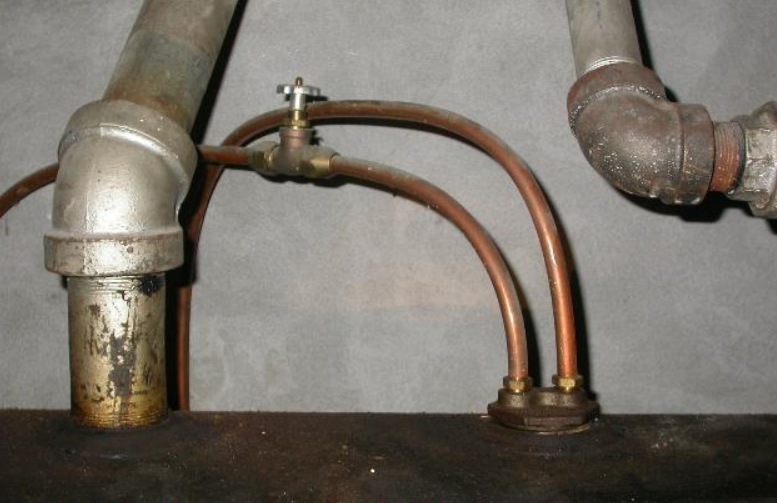Installing a Smart Oil Gauge is one of the best things you can do for your heating oil tank. A Smart Oil Gauge alerts you when the tank is low so you never run out of heating oil. It also frees you up to only buy oil as needed. This can save you hundreds of dollars a year over automatic delivery. And further, it will show you how much oil you’re using so you can conserve heating oil.
With all that being said, you may go to install your Smart Oil Gauge and find you don’t have an extra opening on your tank. If this happens, you may not be entirely out of luck…
Heating Oil Tank Overview
A heating oil tank typically has 4 openings along the top:
- An opening for the fill pipe. This is where the driver pumps oil into the tank.
- An opening for the vent line. This is where air escapes to the outside. The vent line may include a float gauge in the fitting as well.
- An opening for the float gauge.
- An extra opening. Installers will often use this opening to connect a second tank. They may also install top-feeding oil lines. This means instead of the oil coming out of the bottom of the tank, it is drawn from the top. This is common in outdoor tanks or tanks in a recessed area where the bottom is difficult to access.

Where to install a Smart Oil Gauge if there are only 3 openings
If there are only three openings, you have a couple of options. The path you choose depends on your particular tank.
Orientation 1: Fill Pipe / Vent Pipe / Float Gauge
If the openings are as follows: Fill Pipe / Vent Pipe / Float Gauge, then you will have to remove the float gauge to make room for a Smart Oil Gauge. Removing the float gauge can be tricky. You cannot just unscrew a float gauge, as its arm will crash into the inside of the tank. Follow this step-by-step guide to remove the float gauge to free up space for your Smart Oil Gauge.


Orientation 2: Fill Pipe / Vent & Gauge Combo / Top Feed Oil Lines
Most oil tanks have the oil lines coming out of the bottom of the tank and going to the burner. Occasionally, however, the lines can come from the top. This is always the case with Roth double-wall tanks, and is sometimes the case with steel tanks.
If your oil lines come out of the top of the tank, then you will have to have a technician come out and re-route the lines to the bottom of the tank. This is NOT something many homeowners would be capable of doing. The technician will have to create a vacuum in the tank to remove the plug without losing the oil in the tank. They will then have to ensure there is not too much sludge in the bottom of the tank. As you can imagine, this is a last resort for your oil tank, but may be the only way to open up a spot for your Smart Oil Gauge.

The Bottom Line When Your Oil Tank Only Has 3 Openings
A Smart Oil Gauge is a fantastic tool for monitoring heating oil usage. Many folks will go to great lengths to install one. Fortunately, you can remove a float gauge quite easily. Just follow this guide here on replacing your float gauge.
If you need to re-route your oil lines, we recommend waiting until your HVAC technician is at your house for another reason, and asking for a consultation at that time. They will be able to tell you if it’s feasible to move the lines to the bottom of the tank.
Happy heating,
Steve



